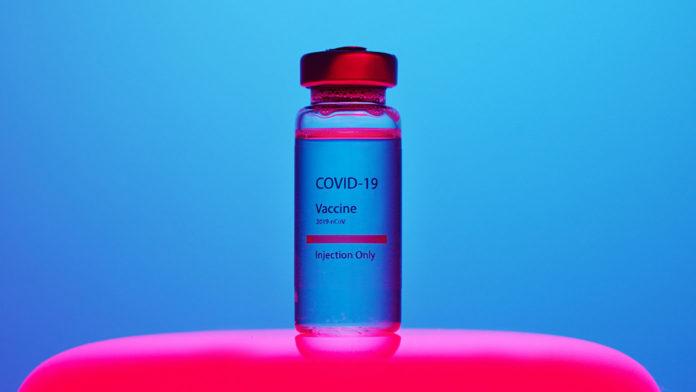After a year of global lockdowns and public health restrictions, an end to the COVID-19 pandemic is finally in sight with the approval of effective vaccines. But it’s not enough to have doses on hand. They actually need to be administered to willing recipients to have any effect.
If people are unwilling to get vaccinated, then vaccine hesitancy could negatively impact rollout. And with the unprecedented speed of development and approval, some people are understandably left feeling uneasy and wondering whether the whole process was rushed.
In truth, there are many places where development and clinical trials can be accelerated without cutting any scientific corners.
We had a over a decade of research as a head start
Researchers have been working behind the scenes to prepare for the next global pandemic for years, and that provided a wealth of knowledge at the outset. Although SARS-CoV-2 — the virus that causes COVID-19 — is new, the coronavirus family is not.
SARS (2003) and MERS (2012) were also deadly respiratory infections caused by coronaviruses. Researchers knew right away that the Spike protein that gives SARS-CoV-2 and other coronaviruses their characteristic crown-like appearance is important to infection. It was a logical target for a vaccine.
At the same time, researchers were developing and testing platform technologies for quick adaptation to emerging viral threats. When China shared the genetic sequence of the novel coronavirus, companies like Pfizer/BioNTech, Moderna, and Oxford/AstraZeneca could quickly customize their existing delivery systems. This development process is much faster than the historical timeline for new vaccines.
There was no shortage of clinical trial volunteers
It can take weeks or months to recruit enough participants for a clinical trial. These timelines can grow especially long if a condition is rare, or narrow inclusion criteria restrict who can join.
In this case there was no shortage of trial volunteers, and recruitment of tens of thousands of people each happened within days. The trials were well publicized and the inclusion criteria were purposefully broad to try to capture as many demographics as possible. Many people were eager to help put an end to the pandemic.
To get the data needed to form an assessment on efficacy, about 150 symptomatic infections needed to happen within the trial participants — half receiving the vaccine candidate, and half receiving a placebo. Historically, most Phase III vaccine trials will recruit 3,000 to 6,000 volunteers, but to get enough infections, they could run for years.
That’s why most COVID vaccine trials recruited 30,000 to 60,000 participants — 10 times more than the typical number. Many participants were healthcare or other essential workers, and the trials were held in virus hotspots. With that high likelihood of exposure to the virus, getting to 150 infections was incredibly fast.
With the much larger-than-usual number of participants, and now the huge volume of post-market data, we can have very high confidence that the approved vaccines are safe. Generally speaking, vaccine side effects happen quite early on, such as allergic reactions that happen immediately. Even adverse events that take longer to appear usually happen within six weeks. The data already cover these longer-term effects.
Governments were eager to provide funding and support
Many hurdles that can be time-consuming can be removed with enough funding.
It can take nearly eight months for the average clinical trial to even select a site for a new study and get ready to enroll patients. In light of the globally recognized urgency for a COVID vaccine, many of these pre-trial delays were eliminated. Trial plans were quickly assembled and approved, and with ready sources of immediate funding, contract and budget negotiations were also greatly accelerated.
Knowing that the funding would be available also accelerated every following stage of the trials, allowing pre-trial screening to happen in parallel with lab development, and multiple phases of the trials to overlap. Typically companies will wait and run phases one by one because clinical trials are so expensive that funding hinges on knowing the results of each phase before the next gets the green light.
In this case, the demand was so great that countries were scrambling to reserve doses, and in return they agreed to fund the trials whether they were a success or not. That also allowed them to ramp up manufacturing well before the clinical trials had concluded, and that’s why doses are already on our doorstep.
Approvals by Health Canada were also hastened through the Interim Order, which allowed rolling review of data during the emergency instead of waiting for the final data set to be complete before starting. This gave the reviewers more time to complete their review by doing it in parallel with the end of the study itself.
As cases rise, public opinion is starting to change
The good news is that compared to when vaccine rollout first began in Canada, more Canadians are now willing to receive a vaccine as soon as they are next in line, according to polls by Angus Reid; only 48 percent of respondents were willing when asked between Dec. 8 and 11, now up to 60 percent for respondents asked between Jan. 7 and 10.
It’s also important to remember that waiting for 10 years for a new vaccine as we have until now is far from ideal. The expedited validation and approval of the COVID vaccines is truly a science success story, and as more doses get into more arms, there is true hope for an eventual return to normal life.








































